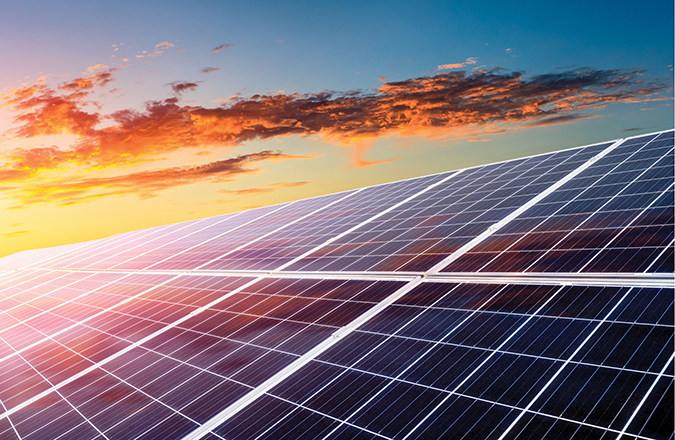Subscribe
Sign up for timely perspectives delivered to your inbox.
Hamish Chamberlayne, Head of Global Sustainable Equities, provides his investment outlook for 2023 and outlines three key themes that mean there is much to look forward to.

Providing an outlook with any degree of accuracy on a short to medium term basis is always challenging – and 2023 is clearly no exception. The headwinds associated with the current backdrop are well-publicised but, for us, there are also strong positives with key sustainable themes potentially accelerating.
Crises often advance innovation, and we believe that today’s geopolitical fragmentation will be the catalyst for tomorrow’s green economy. – Hamish Chamberlayne
Of course, certain global events cannot be forecast – the success of central banks in taming inflation, how different countries address the cost-of-living crisis, and the path of the Ukraine war are all unknowns. But putting aside this uncertainty, we are cautiously optimistic for 2023. China’s Premier Xi Jinping has backstepped his support of Putin’s war against the West, denouncing his use of key resources as a bargaining chip. Meanwhile, the pace of inflation is already starting to ease in some economies and US Federal Reserve officials have voiced support for the slowing of interest rate hikes in the world’s most influential economy. This offers a brighter outlook for companies across the globe, many of which are currently standing at discounted valuations.
While the next 12 months will not be without uncertainty, we believe there is a lot to look forward to.
We have spoken before about the next economic cycle being driven by green industrial revolution – that is society shifting from a fossil fuel-based economy to an economy that is built upon low carbon, digital and electric infrastructure. Recent political instability and supply chain disruption has laid bare the fragility of the traditional global economic model, making the case for an improved, sustainable economy even more pronounced. This notion has been reiterated by developed world policymakers who have put sustainability at the core of policies intended to rebuild and grow a clean and digital economy. This will see strategically important industries be brought closer to home to create economic resilience and foster sustainability at the same time. As a result, we anticipate a capital investment boom on the horizon.
This change has already started happening for some of society’s most strategically important industries. Today, Asia produces the bulk of semiconductors, essential components of electronic devices which enable many clean technology industries. However, some leading technology firms have made clear their intentions to re-shore essential supply chain elements to reduce reliance on overseas factories. For example, semiconductor manufacturer TSMC, which supplies semiconductors to many of the largest technology companies in the world, recently announced that it is building a semiconductor plant in Arizona, US, and is looking at developing new capacity in Europe too. Tim Cook, CEO of tech giant Apple, stated “I think you will wind up seeing a significant investment in capability in both the US and Europe to try to reorient the market share of where silicon is produced”.
We expect to see similar momentum in other industries in 2023 – renewable energy technology, battery supply chains and electric vehicles – as businesses look to reshore and rebuild. Many of these industries will be essential for a sustainable future, and it is these industries that will become the foundation of a green sustainable economy.
The energy crisis will continue to be a topic of focus in 2023, however, we see technology playing an important role in mitigating energy inflation by offering cheaper alternatives and reducing the dependence on the physical economy. Policymakers have made clear that clean energy is key to meeting energy security needs, with the European Union’s Green Deal and the US Inflation Reduction Act investing €1,800 billion and US$370 billion respectively in the green transition.1,2 In 2022 alone, investment in renewables increased significantly despite supply chain constraints, with solar projects up 33% reaching a record-breaking US$120 billion and wind project financing up 16% to US$84 billion.3

As well as being integral to energy security, renewables are much cheaper than many other power generation technologies. In fact, today they are the cheapest source of energy for two-thirds of the global population making up 75% of global GDP.4 Juxtaposed with rising energy prices, the economics of clean technologies are compelling. As such, we expect the industries surrounding clean energy to be a key focus in 2023.
In recent years we have seen an increasing adoption of electric vehicles (EVs) as their economics have become more attractive and as their ability to decarbonise the economy becomes more pertinent to achieving global net-zero goals. Globally, over 16.5 million electric cars were on the road by 2021, a tripling in just three years.5 This is echoed by global EV investment which soared by 77% to $273bn in 2021. In stark contrast, global internal combustion engine (ICE) production peaked in 2017. As a result, we expect demand for transportation fuels, which represent around 60% of oil demand, will begin to taper in the second half of the coming decade.
We consider these changes to be indicative of an inflection point in the s-curve of electrification. We believe electrification is well and truly in a strong growth stage, with innovation creating better and more efficiency vehicles at cheaper prices. Over the coming decade we forecast more than 50% of all automobile production will shift to electric. Along with EVs we will see an uptick in innovation in all aspects of electrification including buildings and industry.
While some have drawn parallels today to the energy crisis of the 1970’s – which saw sky-high energy prices – we believe we are in a much different place now than we were back then. Oil price increases were much more material in percentage terms 50 years ago than they are now, but an even greater difference is that today the technological solutions to mitigate these inflationary pressures already exist, and furthermore their economics are highly attractive.
Notwithstanding the uncertainty over the Ukraine war and the challenging winter ahead for Europe, we are far more constructive on markets than we were 12 months ago. Company valuations have been discounted significantly and yet we still see plenty of secular growth opportunities ahead. Crises often advance innovation, and we believe that today’s geopolitical fragmentation will be the catalyst for tomorrow’s green economy.
When we look at companies, fundamentals remain important as ever. We focus on businesses with robust balance sheets and the ability to generate cash flow through times of economic turbulence, which will be inevitable in the coming year. Equally, we focus on companies that are aligned to the development of a sustainable economy and which will flourish in an environment of reshoring, resilience and electrification.
1 European Commission, European Green Deal, July 2021
2 The White House, By the numbers: The Inflation Reduction Act, August 2022
3 BNEF, Energy transition investment trends 2022, January 2022
4 BNEF, 1H 2022 LCOE update: Cost inflation, but not inflection, June 2022
5 IEA, Trends in electric light-duty vehicles, December 2021